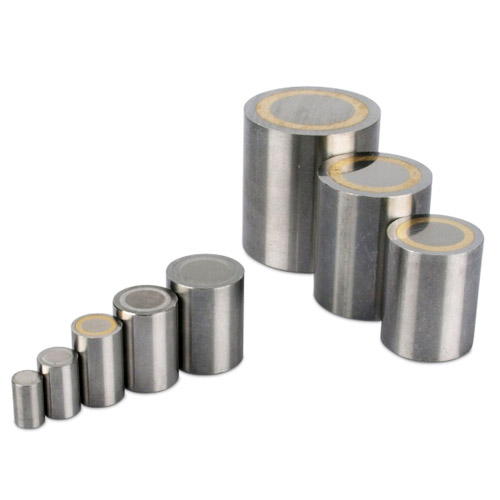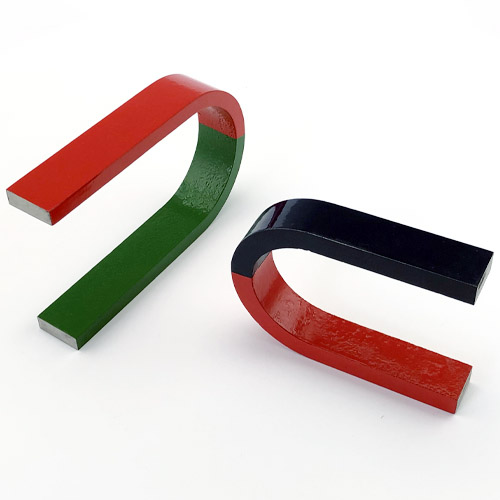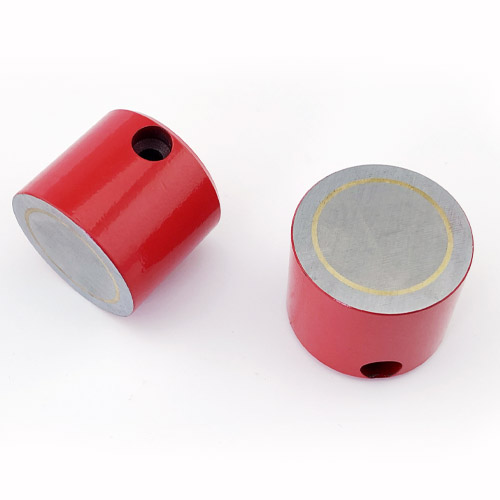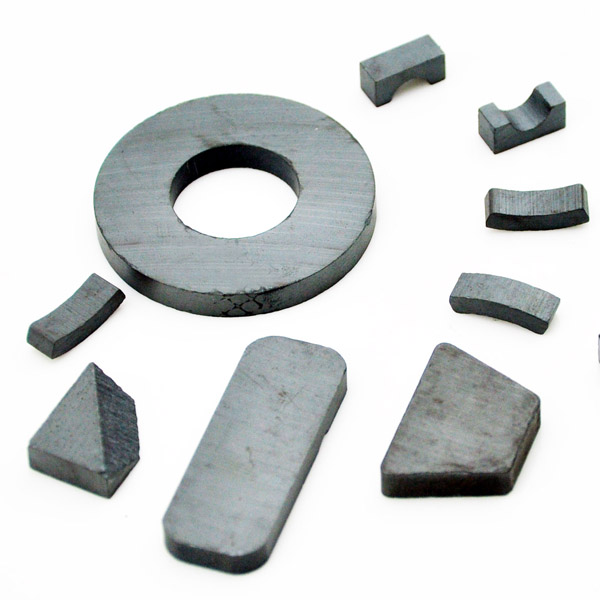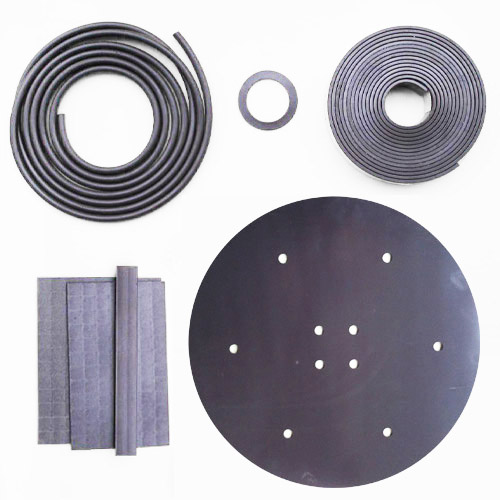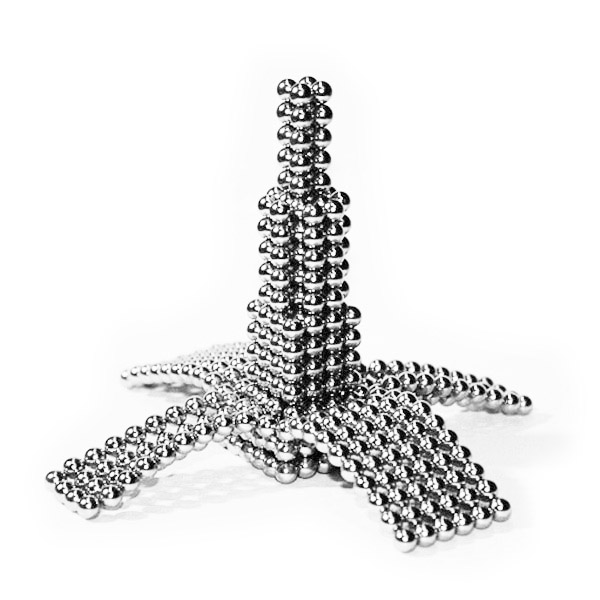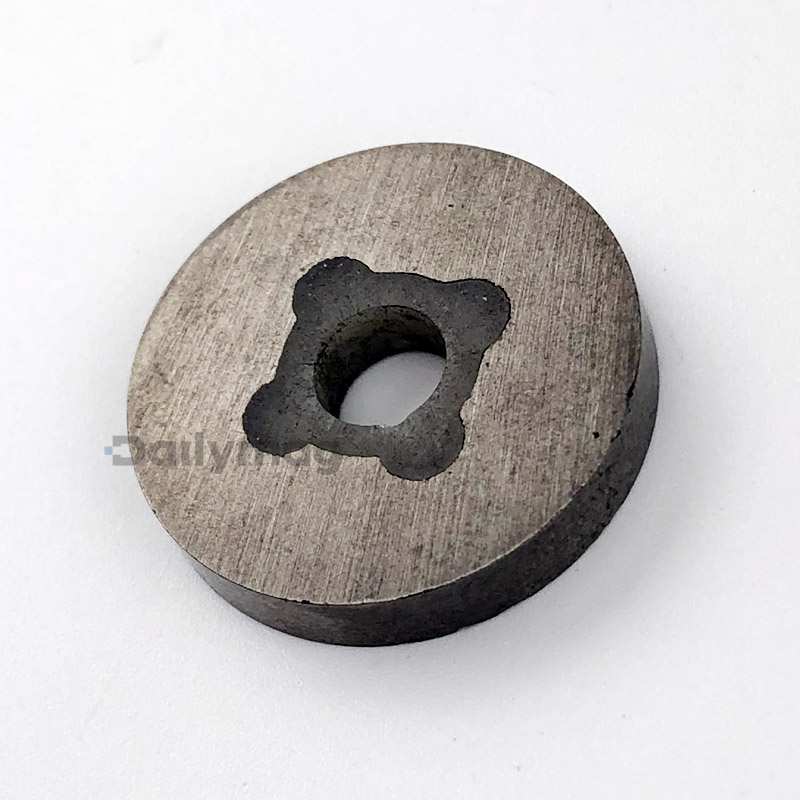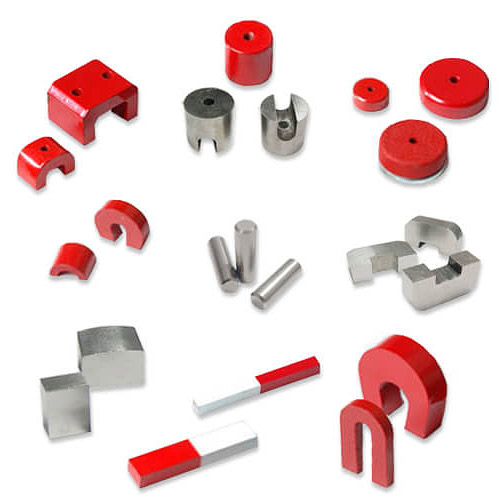
Item No.: alnico
Cast AlNiCo magnet
Using patterns and simple moulding techniques, Cast AlNICo Magnet can be cast to form a vast range of complex shapes and sizes at an economical cost.
General Introduction of Cast AlNiCo Magnet
Using patterns and simple moulding techniques, Cast AlNICo Magnet can be cast to form a vast range of complex shapes and sizes at an economical cost.
Eclipse Magnetics Alnico magnets are ideal for high temperature applications up to 550ºC
Cast AlNICo Magnet is very stable, has good corrosion resistance and a typical hardness of 50 Rockwell C. Once cast, the material is so hard that the only machining possible is grinding
Cast AlNICo Magnet represents the most versatile magnet material available. The range of properties can be accurately designed for specific applications by changes to element analysis and heat treatment.
Typical Applications of Cast AlNICo Magnet
* ABS braking system magnets
* Reed switch operating magnets
* Electricity meter damping magnets
* Holding/clamping applications
* Microwave applications
* Weighing scale damping magnets
* Electropermanent systems
* Calibration magnets
* Heat treatment jigs and fixtures
What shapes can it be formed with Cast AlNICo Magnet?
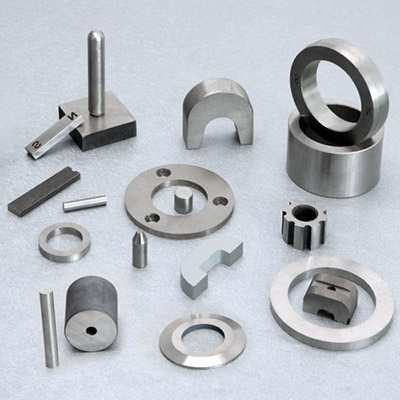 | 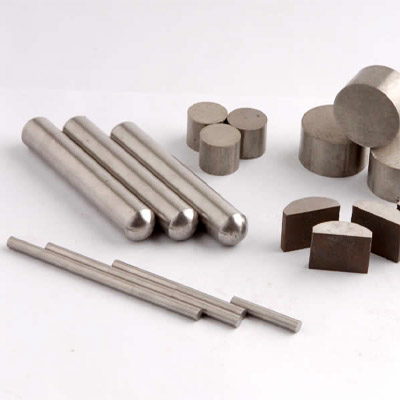 |
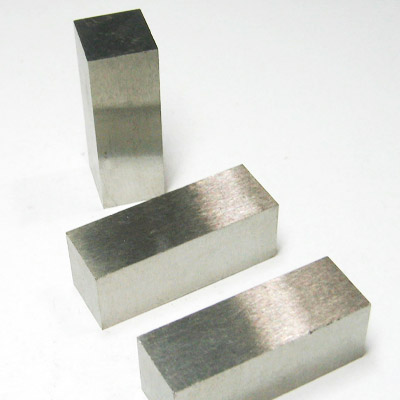 | 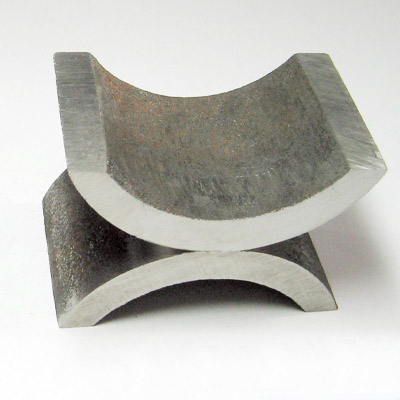 |
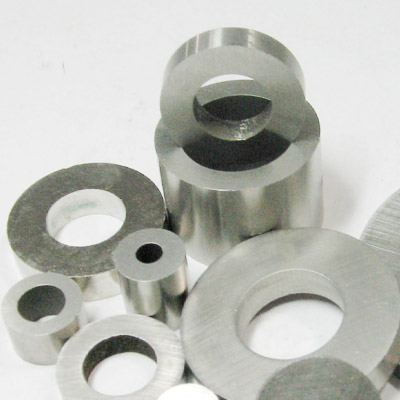 | 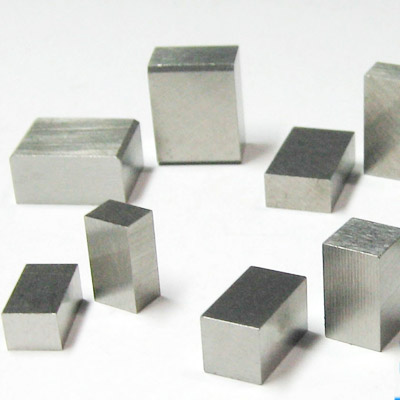 |
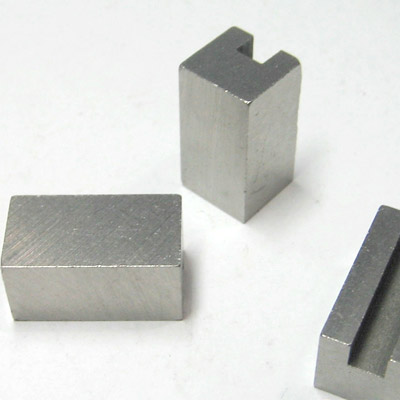 | 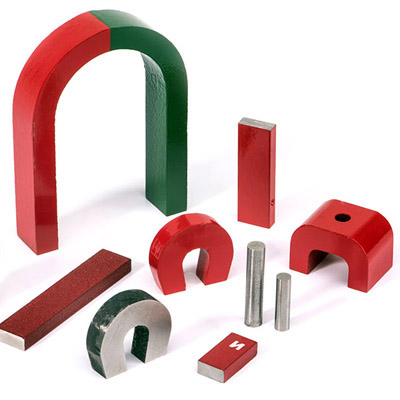 |
Magnetic properties of Cast AlNiCo magnet:
| Equivalent MMPA Class | Grade | Remanence | Coercive Force | Max. energy product | Density | Rev. Temp. Coef. | Curie Temp. | Max. operating Temp. | ||||
| Br | Hc | (BH)max | D | Br | Hc | Tc | Tw | |||||
| mT | KGs | KA/M | Oe | KJ/m3 | MGOe | g/cm3 | %/°C | %/°C | °C | °C | ||
| ALNICO 3 | LN9 | 680 | 6.8 | 30 | 380 | 9.0 | 1.13 | 6.9 | -0.03 | -0.02 | 810 | 450 |
| ALNICO 2 | LNG12 | 720 | 7.2 | 45 | 500 | 12.4 | 1.55 | 7.0 | -0.03 | -0.02 | 810 | 450 |
| LNG13 | 700 | 7.0 | 48 | 600 | 12.8 | 1.60 | 7.0 | -0.03 | -0.02 | 810 | 450 | |
| ALNICO 5 | LNG37 | 1200 | 12.0 | 48 | 600 | 37.0 | 4.65 | 7.3 | -0.03 | -0.02 | 810 | 525 |
| LNG40 | 1250 | 12.5 | 48 | 600 | 40.0 | 5.00 | 7.3 | -0.02 | +0.02 | 860 | 525 | |
| LNG44 | 1250 | 12.5 | 52 | 650 | 44.0 | 5.50 | 7.3 | -0.02 | +0.02 | 860 | 525 | |
| ALNICO 5DG | LNG52 | 1300 | 13.0 | 56 | 700 | 52.0 | 6.50 | 7.3 | -0.02 | +0.02 | 860 | 525 |
| ALNICO 5-7 | LNG60 | 1350 | 13.5 | 59 | 740 | 60.0 | 7.50 | 7.3 | -0.02 | +0.02 | 860 | 525 |
| ALNICO 6 | LNGT28 | 1000 | 10.0 | 58 | 720 | 28.0 | 3.50 | 7.3 | -0.02 | +0.03 | 860 | 525 |
| ALNICO 8HC | LNGT36J | 700 | 7.0 | 140 | 1750 | 36.0 | 4.50 | 7.3 | -0.025 | +0.02 | 860 | 550 |
| ALNICO 8 | LNGT18 | 580 | 5.8 | 100 | 1250 | 18.0 | 2.20 | 7.3 | -0.025 | +0.02 | 860 | 550 |
| ALNICO 8 | LNGT32 | 800 | 8.0 | 100 | 1250 | 32.0 | 4.00 | 7.3 | -0.025 | +0.02 | 860 | 550 |
| LNGT40 | 800 | 8.0 | 110 | 1380 | 40.0 | 5.00 | 7.3 | -0.025 | +0.02 | 860 | 550 | |
| ALNICO 9 | LNGT60 | 900 | 9.0 | 110 | 1380 | 60.0 | 7.50 | 7.3 | -0.025 | +0.02 | 860 | 550 |
| LNGT72 | 1050 | 10.5 | 112 | 1400 | 72.0 | 9.00 | 7.3 | -0.025 | +0.02 | 860 | 550 | |
More professional knowledge of AlNiCo magnets:
AlNiCo magnets, as the name indicates, are composed of Aluminium (Al), Nickel (Ni), Cobalt (Co), and Iron (Fe). They primarily belong to the iron alloy family and contain traces of Copper (Cu) and titanium (Ti) to improve their composition and coercivity. The standard composition of AlNiCo has a comparatively high percentage of Ni (15-26%) as compared to Co (5-24%) and Al (8-12%). The traces of Cu and Ti in 6% and 1%, respectively, are also added. AlNiCo magnets were first developed in 1931 when research on iron, nickel, and aluminum alloy reported very high coercivity value of 400 oersteds, significantly higher than all the ordinary magnets used at that time. These have been used in the formation of permanent magnets. This is because of their ferromagnetic properties that has always been of great use. These were the strongest permanent magnets known till the 1970s when rare-earth magnets such as neodymium magnets were developed. Rare-earth magnets have replaced the AlNiCo magnets to a large extent, but still, AlNiCo has been used in relays, sensors, guitar pickups, lifting magnets, and electro-permanent magnets. AlNiCo magnets are also suitable for equipment that either produces heat or is employed at high temperatures. We manufacture high-quality AlNiCo magnets, which are available for our customers at a very affordable price.
Dailymag AlNiCo magnet range:
We manufacture AlNiCo magnets of different grades, depending upon the relative concentration of all the component metals and shapes. AlNiCo magnets of various forms are available at our outlets. These include rods, rings, cylinders, assembles, horseshoe-shaped magnets, arcs, channels, C-shaped magnets, plugs, blocks, spheres, and discs. Besides all these standard forms, we can also help our customers customize the magnet's size and shape according to their personal applications.
AlNiCo magnets characteristics:
Our AlNiCo magnets has following general features:
- AlNiCo magnets are less coercive, which means they have less resistance toward a demagnetization.
- AlNiCo magnets are also brittle in nature, but their brittleness is comparatively less than rare earth magnets.
- Their magnetic strength is very high, which puts them in the category of permanent magnets.
- AlNiCo magnets do not rust easily even when expose to alcohol, petrol, motor oil, and other solvents for a long time.
- AlNiCo magnets have high ferromagnetic properties.
- They do not require extra preventive coatings on them.
- The Curie point of AlNiCo magnets lies in the range of 800°C.
- AlNiCo does not change its magnetic strength with a temperature change. Therefore, their magnetic strength remains intact even at high temperatures (500 to 800°C).
- AlNiCo magnets can also work efficiently at low temperatures (-70 to -100°C).
- These are primarily available in a horseshoe shape, the most common shape which is hard to achieve in other magnets.
- AlNiCo magnets can also conduct electricity.
- Isotropic AlNiCo magnets can be magnetized in the required direction.
- The direction of anisotropic AlNiCo magnets remains on one axis.
Basics of AlNICo magnets:
AlNiCo magnets are the permanent magnets used immensely before the emergence of rare-earth magnets. These are still used in many devices because of certain advantages over rare-earth magnets, such as retaining magnetization even at a higher temperature. AlNiCo magnets are usually available in two forms, i.e., isotropic and anisotropic. The former can be magnetized in any direction, while the latter can be magnetized in the direction of one axis. It is comparatively easy to magnetize or demagnetize the AlNiCo magnets. For example, AlNiCo magnets can be magnetized by wrapping them in a current containing coil, while switching off the current can demagnetize it. AlNiCo magnet-based switches work in this manner.
AlNiCo magnets manufacturing:
Two main processes are used to form AlNiCo magnets, i.e., the sintering method and casting method. The casting process is more conventional in which sand molds are used to mold the molten metals. It produces AlNiCo magnets of high mass and density and greater magnetic strength. Hence, it is mostly used to form colossal AlNiCo magnets, i.e., in the range of tens of kilograms. In the sintering method, powdered metals are used, and it is considered more economical. The Sintering process carries out the manufacturing of small AlNiCo magnets.
AlNiCo vs. rare-earth magnets:
In the present age, rare earth magnets are in more demand, but still, there are some application requirements where AlNiCo magnets are more suitable. AlNiCo magnets are comparatively less brille than rare-earth magnets. Rare-earth magnets are usually not adopted in the devices working at high temperatures because the temperature greater than their Curie temperature can reduce their magnetic strength. The AlNiCo magnets, on the other hand, can work efficiently at high temperatures. They can maintain their magnetic strength even when they are red hot due to high temperature. Rare earth magnets are difficult to demagnetize, while AlNiCo magnets can be demagnetized or remagnetize easily.
AlNiCo magnets application:
AlNiCo magnets of all grades can be formed by either method i.e., casting or sintering process. AlNiCo magnet in grades 1 to 9 is most widely used to perform at high and low temperatures efficiently. AlNiCo magnets are used as permanent magnets in various customer and industrial applications. These include magnetron tubes, loudspeakers, cow magnets, electric motors, guitar pickups, sensors, and microphones.
Precautions:
Conventional methods should not be used to machine or dill an AlNiCo magnet because it can harm the magnet's magnetic properties. Usually, holes or cuts are made in the magnets before the magnetization process. Otherwise, EDM method can be used for cutting or drilling. AlNiCo magnets should not be used in repelling fields which can affect their magnetic properties. Besides this, magnets should be handled with extreme care. AlNiCo magnets can sometimes chip off or distort under powerful force. Magnets should be kept away from children. AlNiCo magnets can pose damage to equipment such as pace-maker, mechanical watches, credit cards, television, etc due to their magnetic field. Therefore, magnets should be kept almost 20cm away from such gadgets and appliances.
Before choosing an AlNiCo magnet, customers should keep some factors under consideration, i.e., the area of magnet placement, the working temperature, the nature of material present besides the magnet, and the presence of any electric or magnetic field around the magnet.

